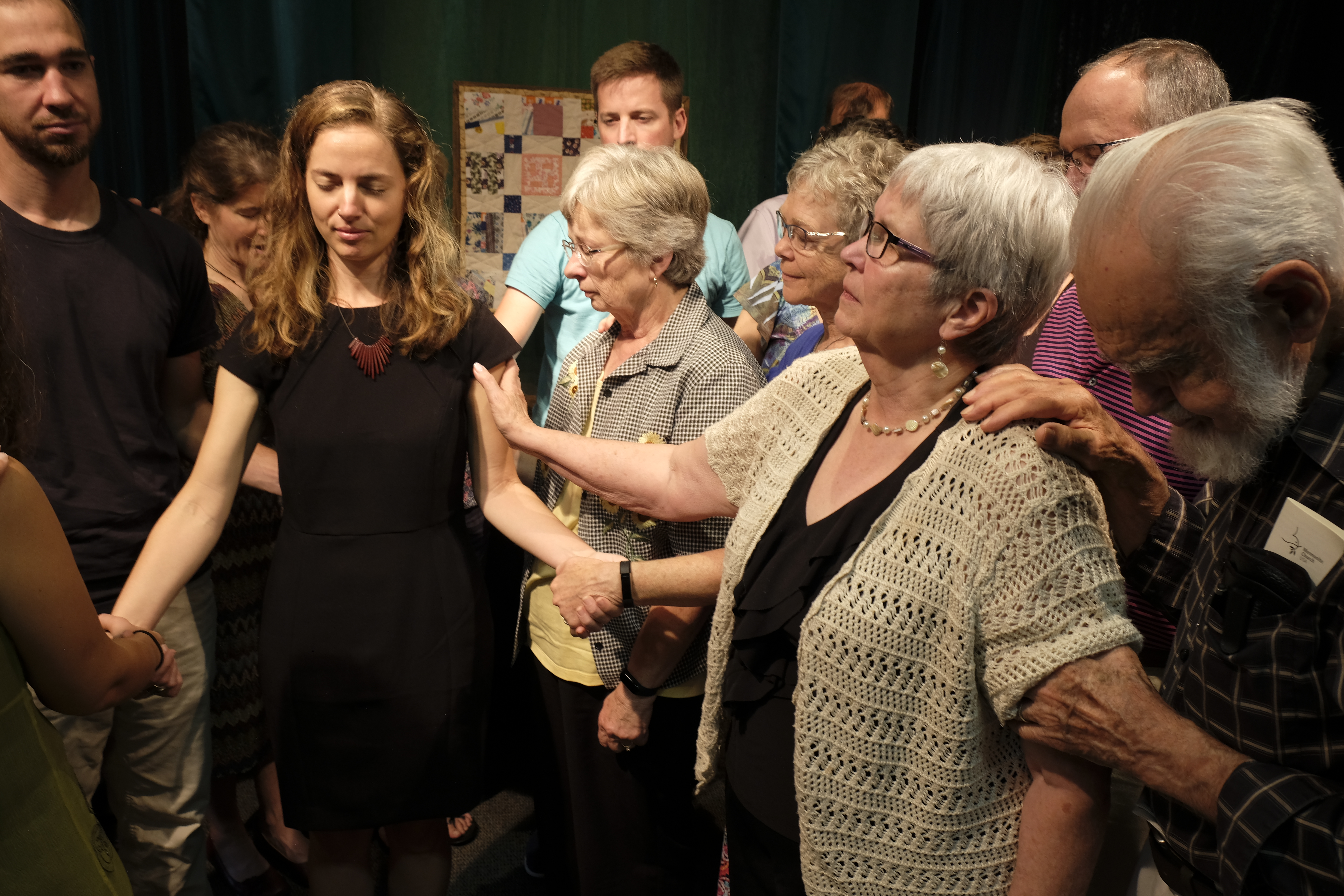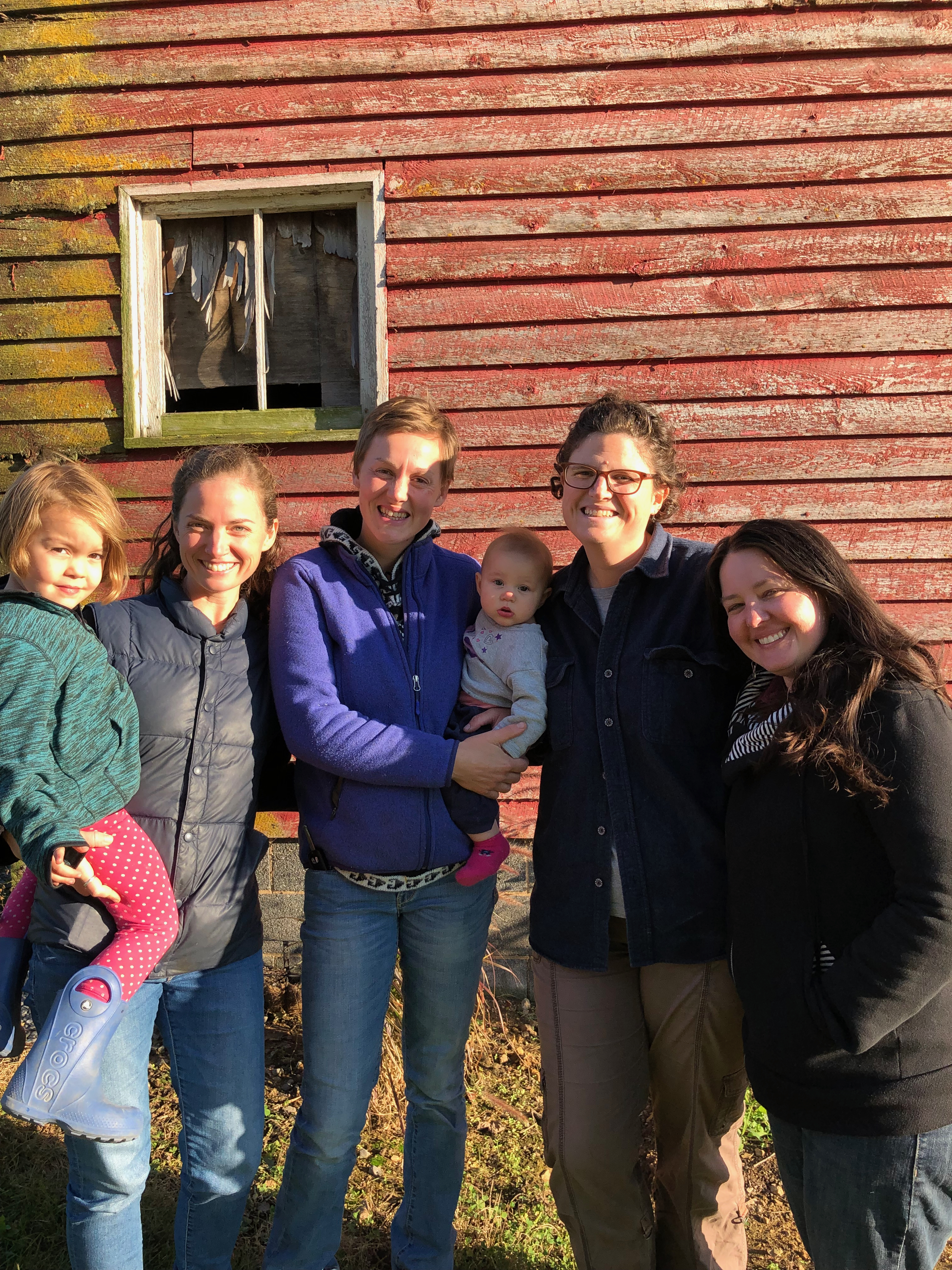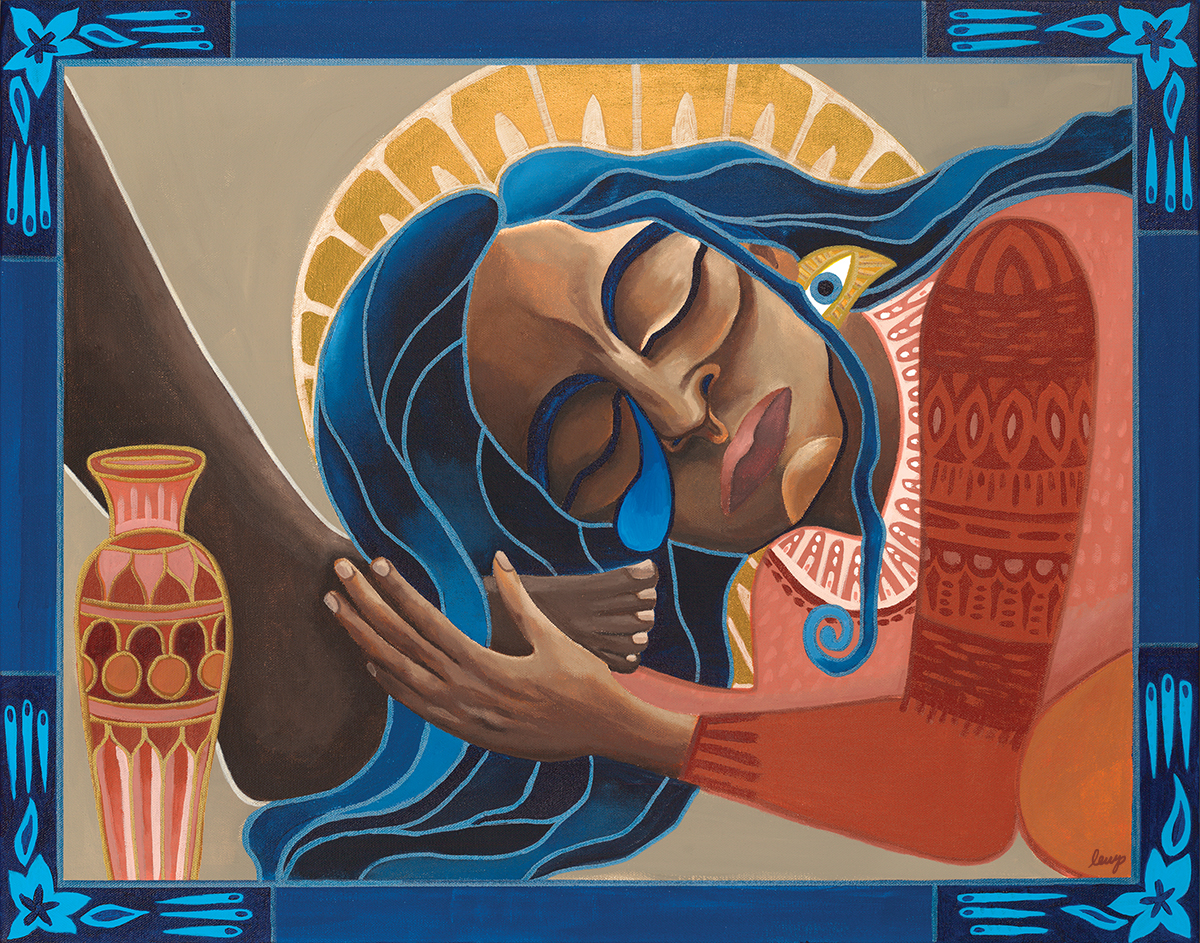The group of youth waited patiently as I deliberated the answer to their question, “What’s your favorite book of the Bible and why?” Particularly self-aware as a new pastor in the congregation, I wanted to articulate my response carefully and in a way that might prompt further conversation. Finally, I staked my claim. “Luke,” I said, “because the author throws a fascinating light on women in the Jesus movement.” Fast-forward a year-and-a-half later, and while the answer may technically be the same on the surface level, my reasoning behind such a statement of Luke’s take on women has dramatically shifted.
Being a white woman of U.S. Mennonite background,[i] I grew up relatively unaware of the concept of white patriarchy and the way it so fundamentally shaped my experience. Ingrained in my religious education and formation was a sense of inferiority and limited influence in all areas of life, including within my church community. Even today, I often remain blind to patriarchy’s effect on the way I – and I would add, the church – tend to read the Bible. I recognize that this experience is not unique to me, to this era, or to white Mennonite women.
Thus, during a tense period of owning my pastoral identity, I found myself reflecting on biblical women who, amidst their own patriarchal contexts, found a way to step up and speak out against the injustice of their (gendered) oppression. Instinctually, I thought of stories in the Gospels, of women speaking to power – be it the powers-that-be, or be it The Power (aka Jesus). These stories and the advocacy in them are too important to remain reflections within me, particularly because my experience of oppression in the Mennonite church as a woman is not unique, nor has it been adequately addressed, even in “progressive” churches where women have (finally) been acknowledged in leadership for several decades.
This essay reaches back to the well-known observation that Luke includes more women in his narratives than any of the other gospels, and it digs deeper into the function of those stories. While a comprehensive study of Luke’s literary perspective is not possible in this essay, many feminist theologians have noted the need for a special consideration of the “double message” nature of the Gospel. As Turid Karlsen Seim notes, there is a tendency to overlook the frequency of women’s involvement in the Jesus movement and their simultaneous silencing, for in Luke, “women act as subjects and are treated as objects in the account of the story.”[ii]
Elizabeth Schüssler Fiorenza’s classic book, In Memory of Her, begins with an observation that the “namesake” of the title, taken from Mark 14.9, is no longer known by her name.[iii] The reader (and the community of faith) is to remember an unnamed woman and her significant actions, and yet her identity largely slips from the frame. We encounter a similar trajectory in Luke’s Gospel, in which there are remnants of stories of women, though their names have largely been lost. The question, then, is: Of the women in Luke whose names are largely unknown, what is the “memory” of their story? And how do these memories relate to the forgotten names of those on the margins today?
In this essay, I consider the Lukan stories in which women own their agency and advocate for themselves within a patriarchal context. Using five scriptural passages, I develop several conclusions from the texts to apply to today’s church, a church still contending with white patriarchy and the voices who seek to challenge it for the sake of the gospel.
Agency and Advocacy: A Framework
A specific interest framing this work is to understand how women in Luke’s Gospel use agency and advocacy. Agency, as summarized from the work of Bronwyn Davies, is the authority people take to make themselves the subject of their discourse.[iv] Davies speaks of the “act of authorship” in which a person “takes up…speaking and writing in ways that are disruptive of current discourses, that invert, invent and break old bonds…”[v] In patriarchal societies, those on the margins (because of gender, sexuality, age, race, etc.) are often denied the ability to claim their authority, and in such a system, one purportedly cannot be an agent.[vi] Yet, there are many who critique these systems and claims, asserting that agency, as a construct, is available to all humans[vii] (and, I would add, to all living things.) While Davies’ definition does not explicitly mention the notion of advocacy as a partner to agency, Amartya Sen’s definition of agency clarifies that there is often a purpose beyond a simple interest in establishing one’s subjecthood. Sen asserts that “[A]gency maintains the position of the needy, however destitute, as subjects engaged in their own surviving and striving.”[viii] In brief, advocacy often provides the purpose or impetus for an act of agency.
When brought into a religious sphere, agency is when a person speaks or acts in the power of the Divine.[ix] Through an additional lens of Christian liberation and feminist theologies, the gospel’s overarching message – the emerging and inverted kin-dom – liberates those on the margins, freeing them to practice advocacy though still “trapped” in unjust structures, here, patriarchy. In other words, persons on the margin are freed by the Spirit to exercise agency with the unveiling of the Good News, regardless of oppressive human structures and expectations.
In this essay, then, I am particularly looking at how agency and advocacy function in the Gospel of Luke, expressly with those whose gender is identified as female.[x] Meanwhile, I recognize that gender is not a static construct across time and place. During Luke’s era there was a gender (male) that rose above another gender (female) in ways reflective of that context, though seemingly unreflective of the gospel (generally speaking) of Jesus. Certainly, the parallels are not exact between gender in Luke’s time and today, but there is adequate overlap to be compelling.
With the extensive material already generated around women in the Gospel of Luke, one might wonder what new observations may come out of another study with new applications for today’s world. Yet, biblical interpretation requires further nuancing around gender, patriarchy, and marginalization. Thus, through this lens of agency and advocacy, the women of the Gospel of Luke become exemplary agents whose experiences speak to people on the margins presently. In many ways the general acknowledgment that many white women today are afforded greater authority and privilege than our biblical foremothers is a reminder of the work still needed to be done. The gap remains wide between those who are “allowed” to speak in patriarchal contexts and those who are not, and that who is marginalized may shift in different contexts. So, while the women of Luke’s Gospel still speak to women’s experience today, their agency also applies in the U.S. to persons of color, to those who identify as LGBTQIA, to those whose economic worth barely affords them survival, and to those who struggle to be agents when multiple factors conspire for their silence.
Women Agents in Luke
For this study, I have identified five scriptures in Luke in which women may be seen as authors in their own story and who act in a way that demonstrates advocacy and purpose. The five texts are 7.36-50, 8.43-48, 10.38-42, 18.1-8, and 18.15-17.[xi] With each scripture, the framework for engagement will include four primary observations:
Who is the woman?
What does she do and/or say?
What are the results or reactions of others?
How does this scripture fit the “agency and advocacy” motif?
Luke 7.36-50[xii]
Luke gives little background information about this woman, aside from noting that she is likely a local in the city; and, he identifies her generically as a “sinner” (7.37).[xiii] Opinions on the type of sinner this woman is vary greatly: from an unquestioning assumption that she is a prostitute,[xiv] to a refusal to attach a specific sin for which is she known.[xv] Whatever the case, she is unclean and not to be touched (nor should she be touching others). So it seems, regardless of the type of sin, and thus regardless of her identity, this story is more directly about seeing the woman’s actions as a contrast to Simon the Pharisee.
While the woman remains silent in the text, Luke descriptively shows her actions: she stands in a purposeful location, weeps so that her tears fall on the feet of Jesus, wipes Jesus’ feet with her hair and kisses his feet, and anoints Jesus’ feet with an alabaster jar of ointment (7.38). Jesus invites none of these actions (and Simon certainly does not either), nor are they seen as commonplace occurrences.[xvi]
The first reaction, tacit in the text, is that Jesus receives the woman’s actions without responding emotionally or verbally. Simon the Pharisee, however, questions Jesus’ identity, and can only see the woman for her sins (7.39). The scene shifts away from the woman for the moment, and Jesus, speaking to Simon, tells a riddle of two debtors in order to establish an “objective truth”: that the one to whom more is forgiven, will love more (7.41-42). The scene returns to spotlight the woman, and Jesus contextualizes the riddle (7.44). Simon’s actions and attitudes are compared with “the woman”; she is shown to be the source of the “objective truth” in the moment (7.44-47).[xvii] The “ones who were dining” there question Jesus, “Who is this, who even forgives sins?” (4.49). Given Simon’s squeamishness, one could also imagine them saying also under their breath “especially the sins of this woman.”
The woman first uses agency to disregard her imposed identity as a sinner. She must know that this label has been attached to her personhood, a label that should serve to segregate her from a holy man. Yet, when Jesus asks Simon, “Do you see this woman?” (7.44), he implies that she is the subject, and her agency and advocacy for self is the reason for Simon’s objections. Her body, which has been objectified as being sinful, is now the subject that demonstrates great love. Her place in the story is not first and foremost as a recipient of Jesus’ compassion; though she is silent, she is not passive.
Luke 8:43-48[xviii]
Again, an unnamed woman enters the narrative. She has experienced a “flow of blood for twelve years” (8.43), and thus is known in the story by her infirmity, though it is uncertain how widely her illness is known. Though Luke does not speak to this one way or the other, the reader knows that within this social context, her bleeding has made her ritually unclean.
Luke again renders the woman silent in her pursuit of wholeness. There is a perceived pre-story, in which the woman has been acting on her own behalf, seeking out healing. She has joined the crowd and made her way through until she is just behind Jesus, where she is able to touch the fringe of his garment (8.44). The woman is found out and acknowledges her actions and the subsequent restoration (8.47).
At the instant of being touched, Jesus stops to ask the crowd, “Who touched me?” (8.45). Peter reacts to Jesus, curious at the implausibility of the question (8.45). Dornisch writes here that “Jesus experiences what might be called vibes, vibrations, sensory or extrasensory dynamics,”[xix] as his “power goes out” (8.46) from him seemingly without his expressed permission. His response to the woman’s confession and profession is compassionate and dignifying. Calling her “daughter,” he commissions her to a life restored (8.48).
The woman has been advocating for herself throughout her illness, seeking healing from any who might offer it. She may be, as one scholar writes, “physically near death,”[xx] yet here we see the pinnacle of her agency, her choice to act as the author of her life, even if that action is potentially “illegal” in the eyes of her community.[xxi] Her body, in the push to Jesus, is her tool of agency, not her words. And, in contrast to the times when Jesus heals people without asking, the woman seeks the healing herself, and reaches out without permission.[xxii] She is not a passive recipient of her healing; instead, she claims her healing.
Luke 10.38-42
Two women feature in this story: Martha and her sister, Mary. Whether they are biological sisters or sisters in the Jesus movement is not made explicit, and while they are named, this is the only story in Luke where Martha and Mary are present.[xxiii]
At the start, Martha welcomes Jesus into the house, acting as host (10.38). Mary soon seats herself at “the Lord’s” feet to listen to his teaching (10.39). Martha seems busy and preoccupied, so she speaks to Jesus, asking him to take notice of her predicament and to speak to Mary, “so that she may take a turn” (10.40). Mary does not speak in the exchange, though one sees through Jesus’ eyes that she has actively chosen to sit with him (10.42).[xxiv]
F. Scott Spencer notices three key responses of Jesus in this passage. [xxv] First, Jesus names Martha twice, “conveying both a ring of intimacy and compassion and a sting of authority and correction.” Jesus then “pinpoints Martha’s shortcoming…He chides her attitude, not her action.” And finally, “Jesus defends Mary’s choice as ‘the good part.’”
The evident conflict between the sisters raises questions about the nature of competing agents, both of whom seek to advocate for themselves, one more vocally than the other. Martha seems to be acting as “an agent mobilized in response to a provocation,” the provocation here being Jesus’ presence and physical needs.[xxvi] Martha is rebuffed and corrected, but as Spencer notes, not because of her agency. Her motivations and attitude are what is questioned. While the classic conflict of the story is between Martha’s serving and Mary’s hearing, Seim writes, “It can thus be claimed that the fundamental antithesis is not between hearing and serving, but between hearing and agitated toil.”[xxvii] Meanwhile, Mary’s agency is hidden behind the text, and some question if her agency is tangible at all.[xxviii]
Luke 18.1-8
This scripture features one of Luke’s parabolic/fictional women, a widow. The widow, seemingly without male support,[xxix] is seen as “assertive” and “shameless” in contrast to her perceived powerlessness (as a woman),[xxx] and yet is knowledgeable about Torah law and widow’s rights.[xxxi] Contextually, these may have been surprising characteristics for a Jewish widow, who would have been expected to be passive and meek, “rarely stirring out of her home.”[xxxii]
In the parable, the widow, seeking justice, comes to a “certain judge” a character the reader is not meant to trust, considering he “did not fear God, nor was respecting of people” (18.2). The judge’s words to himself imply that the widow came to him repeatedly, asking for a decisive move in her case (18.4).
The judge’s primary response is less directed at the widow, and more reflective of concerns around his self-importance. Though the widow “affords him trouble” by “coming continually,” the reader is privy to a discussion the judge has with himself in which he reasons that he “will give her justice, in order that she does not wear me out” (18.5). The judge reckons it will save him time and energy if he simply gives the widow what she is demanding. As Spencer writes, “It would be the rare man in the ancient world, however unfeeling he might claim to be, who would not care about the quintessential indignity of being unmanned and outstripped by a woman’s hand.”[xxxiii] Jesus does not directly respond to the parabolic woman’s actions, and instead points the reader to “hear what the unrighteous judge says” (18.6).
The widow’s agency and self-advocacy are easy to see in the parable. She must take matters into her own hands to find justice, for there is no man around to speak for her. Yet, such a move is contextually unbecoming to a woman, “since women’s self-assertive appearances in open court were generally viewed as irregular and immodest, regardless of their comportment.”[xxxiv] Unique to this story, the widow exercises her agency not once, but over and over again. In the final verses of the text, Luke has Jesus expound the parable, asking, “And will not God do justice for his chosen, the ones who call out to him day and night…?” (18.7). The widow’s unrelenting actions are compared to the fervency of prayer, “not only asking for something but also the notion of commitment and vow or dedication.”[xxxv]
Luke 18:15-17
This is the one scripture in the study in which women are not specifically identified as such in the text. Yet, in Luke’s context, women were the primary caretakers of young children and Luke uses the term brephē (18.15), most often understood as “infants” or “babies.”[xxxvi]
The group of women brings their infants to Jesus “so that he might touch them” (18.15). Otherwise, the group is silent and behind the main action.
The response of the disciples is sharp. Seeing the children brought forward, they “rebuke” their caretakers (18.15). Jesus reprimands the disciples, and re-opens the way for the children to come to him, and compares the receptivity of the children to what is needed to “enter into the reign of God” (18.16-17).
This text highlights the possibility that a woman’s agency and advocacy may be on behalf of another person.[xxxvii] These women maneuver themselves into potential subjecthood and then transfer that to their children. In this act, the children become the subjects of the story, and they are equated with the reign of God. The children are eventually recipients of Jesus’ blessing, but it is the mothers themselves who exert their agency, advocating for the worthiness of their request.
Emerging Motifs of Women’s Agency
These five scriptures each shed a unique light on facets of women’s agency in the Gospel of Luke, yet laying the stories side-by-side creates a richer image of agency and advocacy for women. From the texts, I will draw five conclusions before applying them further to the current U.S. Mennonite context.
Conclusion one: Bodies may be used as tools of agency.
The first observation is that agency is exerted in the act of female bodies entering traditionally male spaces. For example, the woman who anoints Jesus’ feet situates her body in a male space, and then uses her body to invert her stigma and demonstrate great love (7.47). Her tears, her hands, and her hair become the means through which she engages with and touches the body of Jesus, and her agency is far from sterile. Similarly, the hemorrhaging woman, who touches Jesus’ garment, propels her body through a crowd in order to reach out (8.44). And, Mary’s body is situated “at the feet of Jesus” (10.39), a space traditionally thought to be a male’s prerogative.
Particularly in the first two instances, the sense of women’s touch is prominent, and their “impurity had its sources in the female body.”[xxxviii] Of women’s bodies throughout Luke, Elvey writes that “[B]oth women and nature are subjects of a double message in which a forgetting or suppressing of their independent agency is accompanied by an idealization of their responsiveness to the divine. But the double message concerning women is interrupted by the independent responsiveness of the improper female body.”[xxxix] Perhaps it seems simplistic to name, but because women’s physical presence was actively denied or questioned in male spaces, the women in Luke necessarily position and use their bodies in ways that demonstrate authority over their bodies.
Conclusion two: Using agency may require disregarding external impositions on one’s identity.
The women of these stories re-narrate their identities by disregarding or breaking past imposed barriers to their inclusion. Surely the woman of Luke 7 knew she was seen as a “sinner.” Surely the woman of Luke 8 knew her flow of blood meant she should stay at home. Surely the widow of Luke 18 knew it would be better for a man to speak on her behalf.
These restrictive identities are placed onto the women’s bodies by external sources and structures; the women do not self-identify in the text as “sinner” or “unclean” or “immodest.”[xl] Yet Jesus’ response to women’s re-authorship of their identities is supportive. Schüssler Fiorenza writes that stories like Luke 7 “assert, then, that Jesus and his movement invited into their table community not only women but even notorious and well-known sinners. Sinners, prostitutes, beggars, tax collectors…constituted the majority of Jesus’ followers.”[xli] Perhaps the Jesus movement attracted those persons who carried — and were willing to reject — socially-constructed barriers to their inclusion. This second conclusion works in tandem with the first conclusion: not only do women’s bodies enter male spaces in dramatic ways, but the women also simultaneously shed oppressive qualifiers placed on them by patriarchal structures.
Conclusion three: Conflict arises when women advocate or act on their own authority.
I have demonstrated above that the scriptures include conflict and resistance to women’s advocacy. Of Luke 7.36-50, Dornisch writes, “This is one of the Lukan stories in which a woman or women are given prominence and a male figure or men come off badly.”[xlii] Simon the Pharisee is the most obvious opponent to the woman anointing Jesus’ feet (7.39), though “the ones who were dining” with Jesus also resist the invitation to transformation (7.49). In the story of Martha and Mary, the conflict is lodged in conversation between Martha and Jesus, though it seems potentially representative of broader “household divisions” in Luke 10-12.[xliii] In the parable of the widow and the judge, the conflict develops in the response of the dithering and “unrighteous” judge who is slow to grant justice. And finally, the disciples, like hypersensitive guard dogs, intercept and “rebuke” those who bring infants to Jesus.
Subsequently, the conflict creates a contrast to the women’s actions. Again, Simon is contrasted with the woman who anoints Jesus’ feet. The hemorrhaging woman, within the broader textual context, is contrasted to Jairus and his dying daughter.[xliv] Martha and Mary are contrasted to one another. The perseverance of the widow is naturally contrasted to the indifference of the judge. And, in Luke 18.15-17, the contrast is between the people who initiate the bringing of children and the disciples who seek to keep them separate.[xlv]
While there is contrast and conflict in these stories, the women do not use violence to achieve their goals. Their agency is not enforced with violence or in ways that take away the dignity of others. Advocacy is never exerted over or against someone or with the intent to hurt.
Conclusion four: Any blessing or healing from Jesus follows a woman’s act of agency.
This conclusion is particularly evident in view of Luke 7.36-50, 8.43-48, and 18.15-17, and in comparison with other Lukan texts. The women in these three scriptures are firmly subjects, acting first in their movement toward good news and liberation, and experiencing secondarily blessing or healing. This is in contrast to other stories in Luke where women are seen as recipients of Jesus’ healing (e.g. Luke 8.1-3 or 13.10-17). Seim seems to see little distinction between the women’s acts studied here and the examples elsewhere in Luke. She writes, “[W]omen do not come openly and courageously to Jesus with their request for help. Their appeals are indirect: others ask for help on their behalf (Lk 4.48) or they hide themselves in the crowd (Lk 8.43). For the most part, they are in the same place as Jesus, and he sees them and acts.”[xlvi] While I disagree with Seim on her observation of the woman in 8.43,[xlvii] her statement overall is telling. Women more often are seen as recipients of Jesus’ healing, object-lessons for (Luke’s version of) Jesus, and some see the parallel blessings of 7.50 and 8.48 as afterthoughts, Luke’s patriarchal re-assertion of Jesus’ authority in the text.[xlviii]
Conclusion five: A woman’s act of agency is never questioned by Jesus.
Women in these Lukan texts speak and act in ways that demonstrate their agency. Though the community around Jesus questions women’s agency and responds with resistance, Jesus himself never rebukes them. The closest or most “tempting” admonishment to confuse with this observation is Jesus’ response to Martha, yet as discussed above, the “better” interpretation is that Jesus challenges Martha’s attitude, not her agency.
This final conclusion, though based on “silences” in the texts, is affirmed when looking more broadly at Luke’s Gospel and at the other Gospels. Helpfully, Schüssler Fiorenza notes that “[S]ince the Gospels were written at a time when other New Testament authors clearly were attempting to adapt the role of women within the Christian community to that of a patriarchal society and religion, it is all the more remarkable that not one story or statement is transmitted in which Jesus demands the cultural patriarchal adaptation or submission of women.”[xlix]
Interpreting Luke for Today
All of these conclusions are seen best when one “reads the text against the grain” for the times “when Luke’s rhetoric eclipses women and reinforces silent, passive roles.”[l] This, again, is the result of Luke’s “double message,” in which women’s high frequency in the text is surprising, yet the women’s voices are relatively non-existent. The conclusions are also transferable to any culture, though the contextual equivalent of who the women “are” and what they “do” may shift to reflect those who are marginalized in particular. These groups may also shift over time, yet the move to engage with texts is affirmed by many, including Barbara Reid who writes, “It is preferable to engage in a process of recontextualization and reinterpretation in which Luke’s patriarchal biases are recognized and challenged.”[li]
It is certainly the case in Mennonite Church USA (MCUSA) that a patriarchal Christianity still holds fast and women’s voices, like those in Luke, are silenced, resisted, and questioned. There are also other populations whose voices and actions are similarly drowned out, and in view of a Mennonite ethic of creation care, patriarchy aims to keep biblical interpretation and theology firmly anthropocentric and furthermore, androcentric.[lii] Over the last decade, questions around women’s leadership in MCUSA have been raised and worked at, with no shortage of resistance (mostly, it seems, from men). The Women in Leadership Project is an example of an initiative that grew out of acknowledged structural sexism within the denomination.[liii] Anita Hooley Yoder’s history of women’s groups in the U.S. Mennonite context notes a similar question around women’s ongoing roles in leadership, and Hooley Yoder highlights in particular the barriers for women of color.[liv] She observes that histories of women in the Mennonite church have largely been non-existent, their voices effectively silenced over the last century.[lv] Meanwhile, at both a denominational level and a conference level, women have not occupied nor currently occupy formal positions of leadership in significant numbers. Persons of color and persons who identify as LGBTQIA are found in even lower proportions than women.[lvi]
Musa Dube, in a stylized re-reading of Mark 5.24-43 (a parallel to Luke 8.43-48), inserts “Mama Africa” as the woman with a flow of blood who seeks healing. Dube’s re-envisioning provides a framework for MCUSA to imagine the agency the denomination may take, if it chooses to acknowledge the way the body suffers under white patriarchy. MCUSA “is coming behind Jesus. She is pushing through a strong human barricade. Weak and bleeding but determined, she is stretching out her hand. If only she can touch the garments of Jesus Christ.”[lvii]
The conclusions drawn from Luke on the agency of women may be applied to formal structures of MCUSA as a denomination and more informally on a local level. For simplicity’s sake, I will briefly interpret their meaning in each of these contexts. First, along with the efforts to challenge the patriarchal nature of the denominational structures, there is biblical precedent for those on the margin to speak up, to show up where we/they are not supposed to be, and to take on the act of re-authoring the story within the denomination. The work of the denomination is to be alert to those who resist these actions or who seem to escalate the conflict in ways that tighten white patriarchy’s grasp on power. The work is to resist the “patriarchy” of all believers, and be transformed into a “priesthood” of all believers.[lviii]
Perhaps most impactful, the conclusions above are a call for action at a grassroots level, where relationships are stronger and power differentials are contained within a relational community. De-patriarchalizing the church will have a trickle-up effect from the local congregational level, where those on the fringes use their agency to demonstrate the vitality and beauty of the church on the edge. The idea is not to necessarily suggest that those marginalized advocate for a space in the center, displacing the white, patriarchal status quo, but to “re-perceive the margin…as a place of critical movement and full of interest.”[lix] All MCUSA churches are infected and influenced by white patriarchy. It is in the air we breathe in our broader North American context. It is deep in the DNA of our churches because it has been the collective history of this nation. Structures and communities within MCUSA have benefitted from white patriarchy, perpetuated it, and done little to challenge it.
Thus, congregations should contemplate that in the Gospel of Luke, a woman’s act of agency is never questioned by Jesus. The body of Christ should not resist the exercise of agency of those who have been marginalized. There remains the necessary role of communal discernment when a person or group advocates, but ultimately, the invitation of the congregation is to answer Jesus’ question “Do you see this woman?” (7.44) in the affirmative.
Yet, the likelihood is low that a congregation will favorably “see this woman” and a conflicted response should be presumed. The agency of those marginalized by white patriarchy will be questioned and challenged, yet their agency is a sign of great love, which may come at great cost like a jar of alabaster ointment. When bodies are used as tools of agency, there is the real possibility of physical harm. When persons disregard identity markers imposed on them by others, oppressors will likely – if subconsciously – lean in to re-inflict harm and power, be it psychological, emotional, or spiritual harm. And women or those on the margins will need to act without a guarantee of blessing from the church.
Congregations within MCUSA, even those with paid women leaders or leaders of color, are not immune to perpetuating a patriarchal church. Regardless of demographics or good intentions, the propensity on the congregational level is to revert to societal patterns and customs. There are certainly parallels to the emerging church, as evidenced in Luke that those in power do not readily bend to resist old traditions. The early church found patriarchy creeping back in, threatening to override the gospel message of inclusion for those on the margins. Yet, Schüssler Fiorenza writes,
[T]he basileia vision of Jesus calls all women without exception to wholeness and selfhood, as well as to solidarity with those women who are the impoverished, the maimed, and outcasts of our society and church…It empowers us to walk upright, freed from the double oppression of societal and religious sexism and prejudice. The woman-identified man, Jesus, called for a discipleship of equals that still needs to be discovered and realized by women and men today.[lx]
Conclusion
The women of Luke are model agents, demonstrating a divine disregard for patriarchal barriers that stand in the way of the gospel. From these women, today’s church learns that the gospel message to those on the margin is clear, even when Luke’s patriarchal authorship obscures it: there is biblical precedent for agency and advocacy, and there is biblical precedent that agency results in patriarchal resistance.
And, while women today are still invited to tap into these exemplars of agency, white patriarchy has marginalized and continues to marginalize multiple groups and abuses the earth. All who do not conform to a patriarchal-defined “center” are encouraged to advocate for the revelation of good news on the margin. So too, should they hold firm to the memory that Jesus makes no claims for a patriarchal church nor will Jesus question acts of agency of those whose identities are deemed lesser by the powers-that-be. Our foremothers whisper through the scripture: Your agency has saved you. Go in peace.
Notes
[i]. My context here and throughout, when I mention U.S. Mennonites and my affiliation with them, is specifically tied to the denomination known currently as “Mennonite Church USA.” There are other Mennonite groups in the U.S. to which I am not able to speak authoritatively.
[ii]. Turid Karlsen Seim, The Double Message: Patterns of Gender in Luke & Acts (Nashville: Abingdon Press, 1994),10.
[iii]. Elisabeth Schüssler Fiorenza, In Memory of Her: A Feminist Theological Reconstruction of Christian Origins (New York: Crossroad Publishing Company, 1985), xiii.
[iv]. Bronwyn Davies, “The Concept of Agency: A Feminist Poststructuralist Analysis,” The International Journal of Social and Cultural Practice 30 (Dec. 1991): 42-53, accessed June 16, 2018, http://www.jstor.org/stable/23164525.
[v]. Davies, 50.
[vi]. Davies, 42.
[vii]. For example, see Elsa Tamez, “Women’s Rereading of the Bible,” in Voices from the Margin: Interpreting the Bible in the Third World, ed. R.S. Sugirtharajah (Maryknoll, NY: Orbis Books, 1995), 48-57.
[viii]. F. Scott Spencer, Salty Wives, Spirited Mothers, and Savvy Widows: Capable Women of Purpose and Persistence in Luke’s Gospel (Grand Rapids: William B. Eerdmans Publishing Co., 2012), 280 (emphasis in original). Spencer quotes Amartya Sen, Development as Freedom (New York: Anchor, 1999), 189.
[ix]. Schüssler Fiorenza, 36.
[x]. There will be one exception to this, in which gender of an agent-subject is not explicitly female.
[xi]. While Luke includes many more pericopes in which women speak or act, most of these women are the objects of the story, not the subjects. Many want to add Mary, mother of Jesus, to the list, but she enters the Gospel as an object of the Spirit’s action, not of her own volition. Others want to include the women listed in 8.1-3, but again, Luke identifies that these women are first recipients (objects) of Jesus’ healing. They may have exerted agency in their own right, but we are not afforded their stories. For more on this, see Barbara E. Reid, Choosing the Better Part? Women in the Gospel of Luke (Collegeville, Minn: The Liturgical Press, 1996), 52ff.
[xii]. Parallel texts to this story can be found in all the other Gospels. Matthew 26.6-13, Mark 14.3-9, and John 12:1-8 all feature a woman who anoints Jesus with alabaster ointment. While John identifies this woman as Mary of Bethany, she goes unnamed in Matthew and Mark as in Luke. There is reference in the other traditions to the great expense of such an action, which Luke does not include. One detail which is present in all is that the woman is contrasted to the men of the story. See Loretta Dornisch, A Woman Reads the Gospel of Luke (Collegeville, MN: The Liturgical Press, 1996), 85.
[xiii]. All biblical citations in this essay represent my own translations of the texts in question.
[xiv]. Seim, 90. Seim offers no hint of suspicion of this assumption.
[xv]. Schüssler Fiorenza, 127-8. She states, “The notion of “sinner” can have a whole range of meanings. It can characterize people who did not keep the Torah…; those who, in our terms, were criminals…; or those who worked in disreputable jobs…”
[xvi]. Seim, 55.
[xvii]. I use scare quotes here, given the infinite numbers of definitions one might use for the term “objective truth.”
[xviii]. Versions of this story are also found in Mark 5.25-34 and Matthew 9.20-22. Mark expands the narrative to include more of the woman’s story – that she had sought help from many doctors, spending all her money, all to no avail.
[xix]. Dornisch, 104.
[xx]. Anne F. Elvey, An Ecological Feminist Reading of the Gospel of Luke: A Gestational Paradigm (Lewiston, NY: Edwin Mellen Press, 2005), 170.
[xxi]. Dornisch, 103.
[xxii]. Spencer, 13.
[xxiii]. The Gospel of John includes other traditions related to Martha and Mary in John 11.1-44 and 12.1-8.
[xxiv]. Seim, The Double Message,100. Seim notes the absence of Jesus’ name in this passage. Luke chooses to refer to him with the term kyrios. She writes that this “characterizes Jesus as the teacher and as the authoritative Lord of the community.”
[xxv]. Spencer, 170-1.
[xxvi]. John D. Caputo, The Insistence of God: A Theology of Perhaps (Bloomington, IN: Indiana University Press, 2013), 48.
[xxvii]. Seim, 105.
[xxviii]. Jane Schaberg, “Luke” in Women’s Bible Commentary, ed. Carol A. Newsom and Sharon H. Ringe (Louisville: Westminster John Knox Press, 1998), 377. Schaberg writes that Mary’s “attitude is that of a disciple, but she is not a disciple. She is only an audience. What she has heard and learned at the Lord’s feet is private; it does not instruct and shape the whole community.” Elsewhere in Luke and Acts, men who hear go on to preach. Schaberg further notes, “‘The word’ is preached by both the Twelve and the Seven in Acts, but it is only listened to by Mary…”
[xxix]. Elvey, 172.
[xxx]. Mary W. Mathews, Carter Shelley and Barbara Scheele, “Proclaiming the Parable of the Persistent Widow,” in The Lost Coin: Parables of Women, Work and Wisdom, ed. Mary Ann Beavis (London: Sheffield Academic Press, 2002), 50.
[xxxi]. Luise Schottroff, The Parables of Jesus, trans. Linda M. Maloney (Minneapolis: Fortress Press, 2006), 192.
[xxxii]. Mathews, Shelley, and Scheele, 50.
[xxxiii]. Spencer, 289.
[xxxiv]. Spencer, 277.
[xxxv]. Dornish, A 186.
[xxxvi]. Seim, 120.
[xxxvii]. Dornisch, 187.
[xxxviii]. Seim, 91.
[xxxix]. Elvey, 173.
[xl]. And certainly, not only women’s bodies, but others as well who were seen in that context as unclean or “lower” in the natural order.
[xli]. Schüssler Fiorenza, In Memory of Her, 129.
[xlii]. Dornisch, A Woman Reads, 85.
[xliii]. Spencer, Salty Wives, 145ff.
[xliv]. Dornisch, 103.
[xlv]. Also of note here, there is the metaphorical comparison of the infants to the reign of God, a comparison that is a result of the encounter.
[xlvi]. Seim, 55.
[xlvii]. My disagreement with Seim is that, in Luke’s version of the woman with a flow of blood, the “lack of courageousness” in speaking up does not diminish the initial action of moving through the crowd or the reaching out or the woman’s primary motivation or emotion for her healing. Rather, these all demonstrate great courage, and moving as “openly” as she could in public!
[xlviii]. Schaberg, 375.
[xlix]. Schüssler Fiorenza, 52-3.
[l]. Reid, 6.
[li]. Reid, 53.
[lii]. By their very nature, the Gospels (and scripture generally) are most concerned with and directed at men. Schaberg, “Luke,” 369 writes, “[W]omen have had to read as though they were men in order to hear themselves fully addressed and challenged.” This is the historic basis from which biblical interpretation has typically been done.
[liii]. For more information, see “Women in Leadership Project,” http://mennoniteusa.org/what-we-do/peacebuilding/women-in-leadership-project/. Women who write on the Menno Snapshots blog attest to the ongoing realities of sexism that permeate life in MCUSA.
[liv]. Anita Hooley Yoder, Circles of Sisterhood: A History of Mission, Service, and Fellowship in Mennonite Women’s Organizations (Harrisonburg, VA: Herald Press, 2017). See Hooley Yoder’s final chapter, “Future Directions for Mennonite Women’s Groups” and her epilogue for reflections on conversations around historic women’s groups within MCUSA.
[lv]. Hooley Yoder, 248.
[lvi]. It should, of course, be noted that MCUSA has in 2018 appointed its first person of color in the “highest” position of Executive Director of the denomination. However, as Melissa Florer-Bixler writes, “I’m reminded by colleagues and friends in the Mennonite Church that top level positions only go to people of color and/or women when the ship is on the rocks. If it’s going down, we want to make sure it’s not on the watch of one of our white male leaders.” Melissa Florer-Bixler, “Moving Towards Competent Leadership: Strategies for an Anti-Sexist Church,” Menno Snapshots (blog), September 26, 2017, http://mennoniteusa.org/menno-snapshots/moving-towards-competent-leadership-strategies-anti-sexist-church/.
[lvii]. Musa W. Dube, “Fifty Years of Bleeding: A Storytelling Feminist Reading of Mark 5:24-43,” in Other Ways of Reading: African Women and the Bible, ed. Musa W. Dube (Atlanta: Society for Biblical Literature, 2001), 60 (emphasis in original).
[lviii]. I can’t help but note that “priest” in itself is a masculinized term, too.
[lix]. R.S. Sugirtharajah, introduction to Voices from the Margin: Interpreting the Bible in the Third World, ed R.S. Sugirtharajah (Maryknoll, NY: Orbis Books, 1995), 2.
[lx]. Schüssler Fiorenza, 153-4.



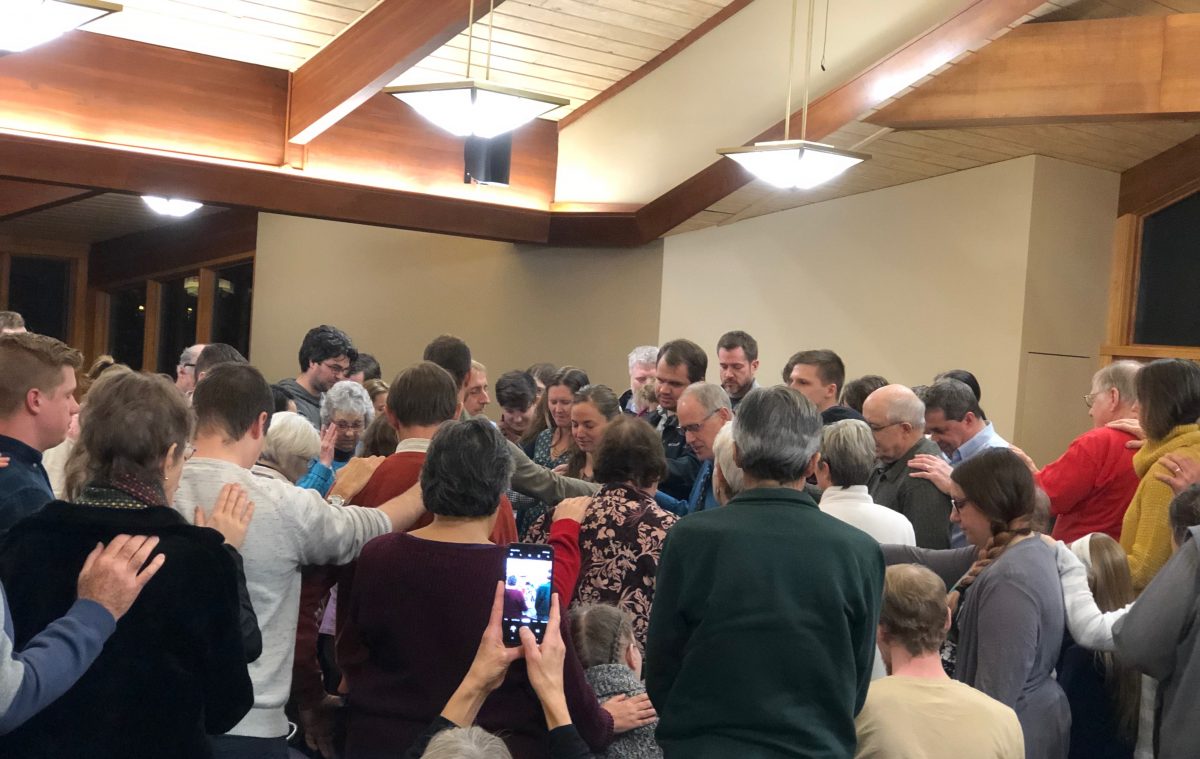
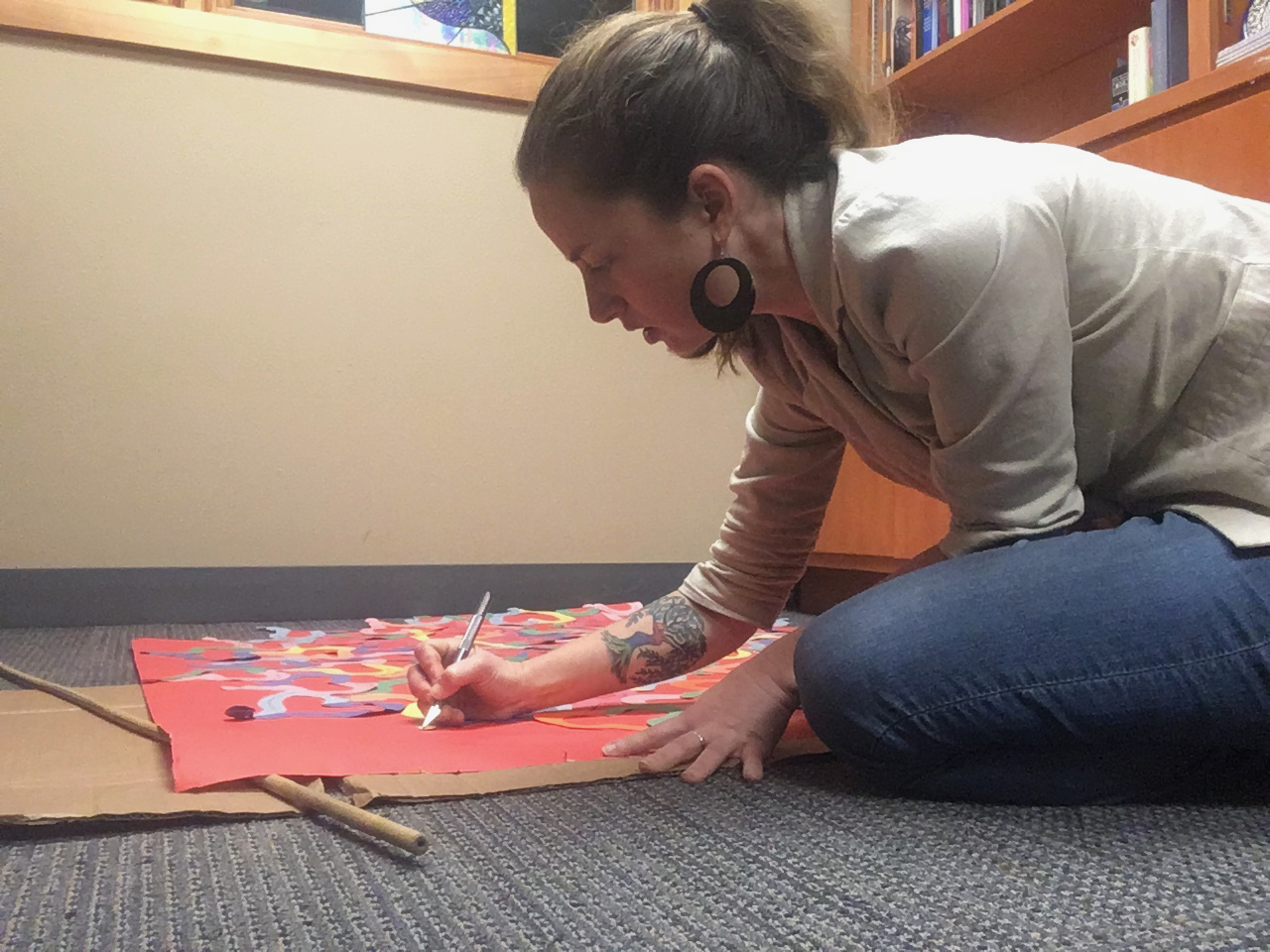 Your strength is good. Your strength will be intimidating. And the range of responses to it will be varied. Some will be caught by your assertiveness and want to dampen it. Don’t be surprised when others, including other (and usually, older) women, fear your strength and try to reassert the patriarchy. (These women are often blind to how they’re perpetuating patriarchy, pandering to the men they think they’ve got to keep happy.) Some folks, with whom you’ve established some level of trust, will acknowledge openly how your strength impacts them. They’re the ones who love you enough to see that your strength is a gift, even when they sometimes feel threatened by it. Love them and be gentle with them. (They’re human, too.)
Your strength is good. Your strength will be intimidating. And the range of responses to it will be varied. Some will be caught by your assertiveness and want to dampen it. Don’t be surprised when others, including other (and usually, older) women, fear your strength and try to reassert the patriarchy. (These women are often blind to how they’re perpetuating patriarchy, pandering to the men they think they’ve got to keep happy.) Some folks, with whom you’ve established some level of trust, will acknowledge openly how your strength impacts them. They’re the ones who love you enough to see that your strength is a gift, even when they sometimes feel threatened by it. Love them and be gentle with them. (They’re human, too.)